
A Child’s Bedroom Was ‘a Danger Zone’
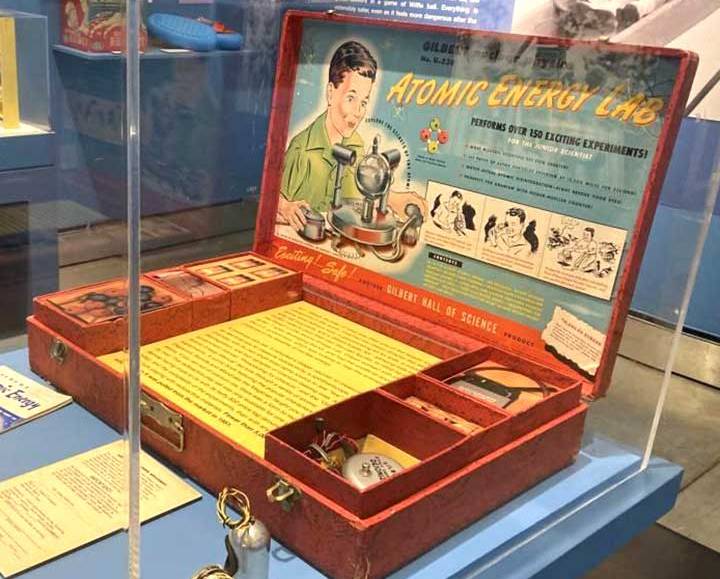 |
Back when Eichler homes were new, kids in the family lived lives that were free and easy compared to today. A play date? Nah! Just open the front door and run free till dinner time.
Still, as a black comedy of an exhibition at the Napa Valley Museum shows: with the toys they were given to play with, it is remarkable these kids managed to live at all. One panel says it all: “Explore the danger zone that was a child’s bedroom.”
“Kids could run wild in the street,” says Laura Rafaty, the museum’s executive director and curator of ‘Dangerous Games: Treacherous Toys We Loved as Kids,’ which continues to September 25.
“You could go and buy explosives in the hobby shop. You could hang out by the train track, you could dangle from tall trees,” she says. “Kids today can’t run free all day long without their parents knowing where they are. That would be considered bad parenting today.”
Why this show and why now?
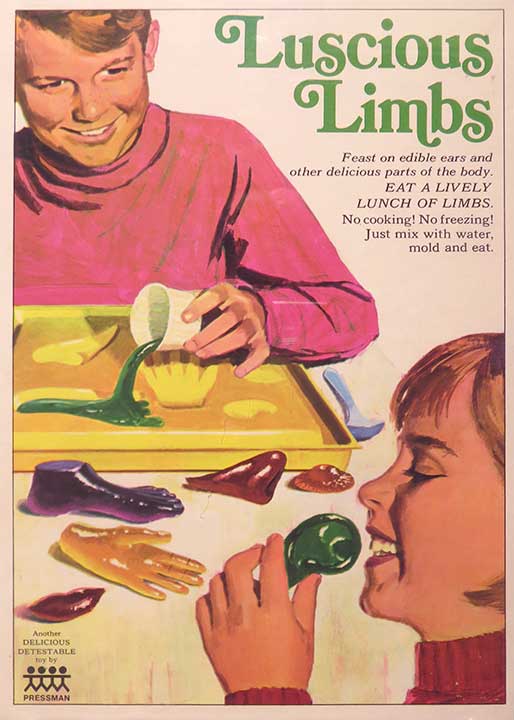 |
“I’ve always been interested in treacherous toys,” Rafaty says. “My cousin used to chase me through the house with Creepy Crawlers.”
Plus, after nearly two years shuttered because of Covid, the topic seemed apt. “It resonates with people, because everyone was feeling so much danger,” she says. “But we survived.”
Well, some of us did. But how did so many children manage to reach adulthood, in the years before the passage of the Child Protection and Toy Safety Act in 1969, and the birth of the Consumer Product Safety Commission in 1972, when kids could buy toys like:
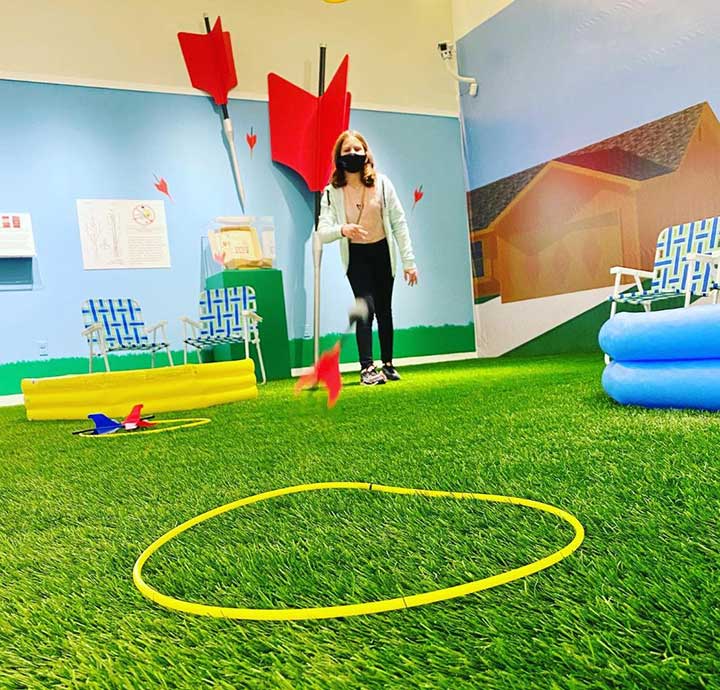 |
The Secret Sam Pipe Shooter, that let little boys sucking on toy pipes target their friends with sharp projectiles;
The Malaysian Blowgun, described by Wham-O toys as “silent and powerful,” and capable of hitting a “bulls eye,” or your best friend’s eye, with a tempered steel dart from 30 feet away;
Or how about those Creepy Crawlers, which kids could make themselves using high heat and toxic substances? Read what Rafaty’s wall panel has to say:
“Here’s a great idea for a line of toys for the kids: give them unsupervised access to searing-hot metal molds reaching 300 degrees and above, into which they squeeze from bottles of brightly colored toxic goo, then breathing in the noxious fumes while forming plastic bugs ready to be peeled from the hot plate and hidden in a sister’s hair, shoved up a nose, or simply swallowed whole.”
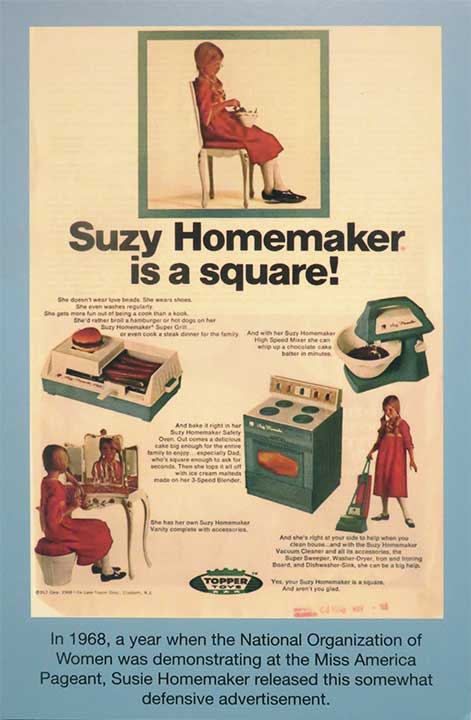 |
Many exhibit visitors tell Rafaty childhood memories of menacing toys.
“People talk about the Lawn Darts most vividly,” she says. “A lot of people spent a lot of time dodging those things.”
Today lawn darts, which remain on the market, are blunt-tipped. Back in the day, though, Rafaty writes, they were “metal missiles with heavy shafts, pointed tips, and aerodynamic plastic fins.”
“A boy could pick one up, heft it in his hand, and feel the latent lethality,” Rafaty writes.
One of the more dangerous toys indeed caused real harm, the Swing Wing, a helmet with plastic streamers that would fly wildly about, but only if the wearer would rapidly swing his or her neck and upper torso.
“The toy was pulled from the market due to severe neck and spinal injuries,” Rafaty reports.
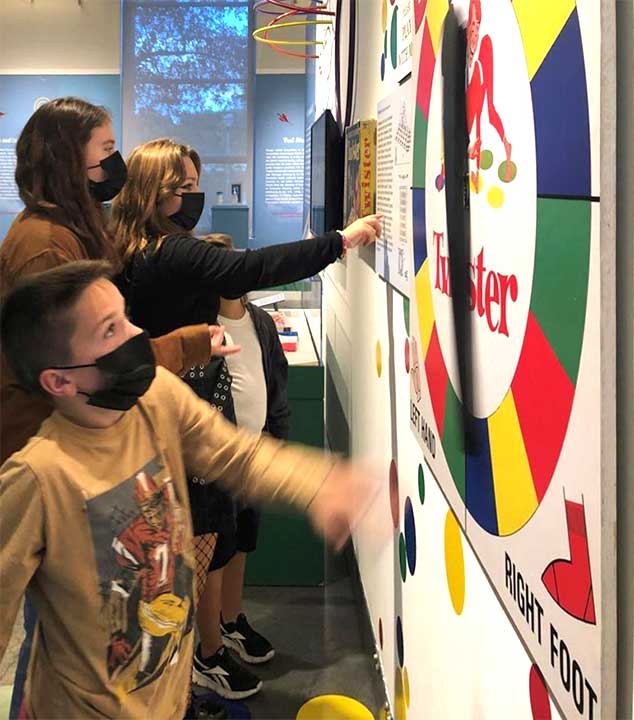 |
Dangers were not only physical. They were psychical too, Rafaty says, pointing to Ouija boards (which she loved as a girl) and other games that aimed at the psyche.
And did toymakerss try to enforce gender and social norms? Consider the Suzy Homemaker set, created in the hippie days, with toy ovens and grills that could burn an unwary child. “She doesn’t wear love beads,” the ads bragged of Suzy, who was clearly designed as a role model. “She wears shoes. She even washes regularly.” And: “She gets more fun out of being a cook than a kook.”
Still, kids hoping to explore psychedelia could do so thanks to the local toy shop. Wham-O sold the Super Elastic Bubble Plastic that produced “a flammable acetate vapor” which could cause, what Consumer Reports called, “a drug-like euphoria.”
Nothing, however, beats the earliest toy in the show, the 'Atomic Energy Lab,' from 1950, complete with “4 samples of Uranium-bearing ores.”
“The exhibit is the most popular one we have ever had in the history of the museum,” Rafaty says -- and who would be surprised?
Next up at the museum: Opening October 8 are photos actor Jeff Bridges has taken at every movie set he's ever worked; plus a look at ‘Polyanna,’ a 1960 Hayey Mills film shot in Napa and Sonoma. “A real California story,” Rafaty says of the upcoming shows.
- ‹ previous
- 8 of 677
- next ›



